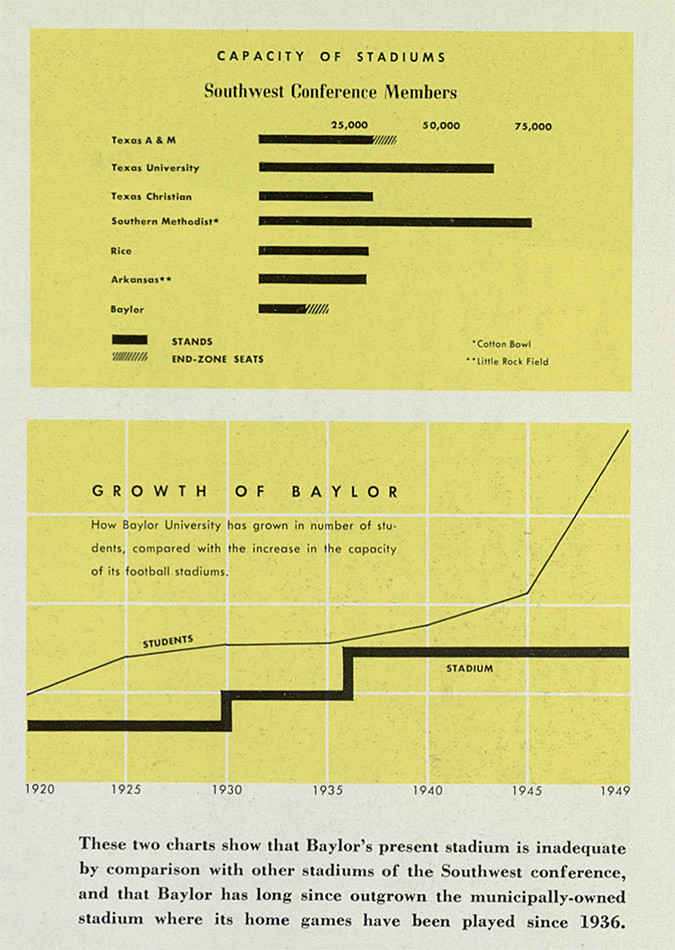Each month, we post an update to notify our readers about the latest archival collections to be processed and some highlights of our print material acquisitions. These resources are primed for research and are just a sampling of the many resources to be found at The Texas Collection!
October’s finding aids
By Emily Carolin, Graduate Assistant, and Paul Fisher, Processing Archivist

- Carol R. Bates photograph album, 1907-1910 (#3980): Provides a glimpse into student life at Baylor in the 1900s. Many of the University’s events such as “Ring Out,” graduation, and sports such as football and baseball are represented in this album.
- W.R. “Skeet” Eason papers, 1928-1940 (#2983): The W.R. “Skeet” Eason papers give insight into the workings of an airport operator and pilot in the 1920s-1940s through logbooks and photographs. With his friend, Ed Ockander, Eason operated the East Waco Airport from 1929-1933, where they sold airplanes, taught flying, and barnstormed at various small towns in the 1920s and 1930s. This collection includes Eason’s logbooks from East Waco Airport and photographs.
- Aaron Moses Goldstein papers, 1927-1936 (#1807): Aaron Moses Goldstein was well-known in the Waco area, as president of his father and uncle’s company, Goldstein-Migel Department Store, city commissioner, and president of the Waco Chamber of Commerce. His papers include correspondence to and from Goldstein and several prominent leaders in the Waco community.
- John Oscar Birgen “Swede” Johnson papers, 1860s-1990s (#2284): The collection of John Oscar Birgen “Swede” Johnson contains articles, photographs, and other materials on the railroad industry in Texas from Johnson’s 41 years working in the Katy Railroad Shop.
- John R. Rogers Architectural drawings (#3924): The John R. Roger Architectural drawings contain plans for many different kinds of buildings in Central Texas, designed by Waco firm Drennon Associates/The Rogers Company. The majority of the plans are for buildings in Central Texas, including Waco, Rosebud, Itasca, McGregor, Lorena, Belton, Salado, Temple, and more.
- Champe Carter Eubank Photo Album, circa 1890s (#2790): Compiled over a series of trips to New England and includes images of Waco, Texas, as well as coastal scenes in New England. The album displays some early photographic practices such as cyanotypes, silver gelatin, collodion, and albumen prints.
- Waco Regional Baptist Association records, 1897-2014 (#230): The Waco Regional Baptist Association records largely document the activities of the Waco Regional Baptist Association in Central Texas from the 1930s through the early 1980s. It is comprised of minutes, correspondence, periodicals, reports, budgets, ledgers, and photographs.
October’s print materials
By Amie Oliver, Librarian and Curator of Print Materials
The Cities of El Paso, Texas, and Ciudad Juarez, Mexico: Photo-gravure. El Paso: W.G. Walz Co., 1894. Print.
With only two pages of text, the majority of this volume is a wonderful collection of nearly 40 images of El Paso and Ciudad Juarez. From the Plaza of Ciudad Juarez to the views of Fort Bliss, this volume provides a great look at turn of century Texas and Mexico. Click here to view in BearCat!
![Jones, Tom. Miniatures: Gulf Coast, Southern Texas [Cincinnati]: [Tom Jones], 1907. Print.](https://c6.staticflickr.com/6/5560/30533286501_ba282f227b_o.jpg)
Jones, Tom. Miniatures: Gulf Coast, Southern Texas [Cincinnati]: [Tom Jones], 1907. Print.
This accordion-style booklet contains 24 images of the Texas coastal region, including photos from Bay City, Rio Grande Valley, Brownsville, Corpus Christi, and more. The images range from residential, coastal, and agricultural points of interest. Click here to view in BearCat!
![Austin, Stephen F. Notice. [San Felipe de Austin]: [G.B. Cotton], 1829. Print](https://c7.staticflickr.com/6/5603/30321499390_e0fa21dcfa_o.jpg) Austin, Stephen F. Notice. [San Felipe de Austin]: [G.B. Cotton], 1829. Print.
Austin, Stephen F. Notice. [San Felipe de Austin]: [G.B. Cotton], 1829. Print.
This rare broadside, one of only three copies of the original 25 printed known to exist, informs immigrants to Austin’s Colony about the information needed to be accepted. Requested information includes name and age of the head of household and dependents, occupation, and “recommendations, accrediting the Christianity, morality and steady habits of the applicant.” Click here to view in BearCat!










